Design and Demonstration of a Tandem Dual-Rotor Aerial–Aquatic Vehicle
Abstract
:1. Introduction
- (1)
- This study presents a novel approach to designing an aerial–aquatic vehicle with a tandem rotor configuration. The slender body design of the AAV effectively minimizes the impact of water, improving its adaptability in both water and air environments.
- (2)
- It employs a composite power system and possesses the capability to sustain underwater hovering and significant pitch angles. This setup enables swift attitude adjustments upon water entry, theoretically and practically resolving issues associated with capsizing during water entry and exit.
- (3)
- Utilizing the tail vector propulsion mode, the AAV demonstrates fast movement and precise steering with a small turning radius both underwater and on the water surface. This significantly enhances its underwater flexibility.
2. Overview of Aerial–Aquatic Vehicles
2.1. Overall Design of Tandem Dual-Rotor AAV
2.2. Dynamic Modeling
2.2.1. Coordinate System Definition
2.2.2. Dynamic Model of the Tandem Dual-Rotor Aerial–Aquatic Vehicle
2.3. Simulation and Analysis of Control
3. Prototype Vehicle Design and Implementation
3.1. Configuration Overview
3.2. Avionics
4. Experimental Results
4.1. Hovering Flight
4.2. Water Entry and Water Exit
4.3. Move Underwater and Cross the Gap
5. Conclusions
Author Contributions
Funding
Data Availability Statement
Conflicts of Interest
References
- Sahoo, A.; Dwivedy, S.K.; Robi, P.S. Advancements in the field of autonomous underwater vehicle. Ocean Eng. 2019, 181, 145–160. [Google Scholar] [CrossRef]
- Wu, Y.; Duan, Y.; Wei, Y.; An, D.; Liu, J. Application of intelligent and unmanned equipment in aquaculture: A review. Comput. Electron. Agric. 2022, 199, 107201. [Google Scholar] [CrossRef]
- Rumson, A.G. The application of fully unmanned robotic systems for inspection of subsea pipelines. Ocean Eng. 2021, 235, 109214. [Google Scholar] [CrossRef]
- Zeng, Z.; Lyu, C.X.; Bi, Y.B.; Jin, Y.F.; Lu, D.; Lian, L. Review of hybrid aerial underwater vehicle: Cross-domain mobility and transitions control. Ocean Eng. 2022, 248, 110840. [Google Scholar] [CrossRef]
- Yao, G.C.; Li, Y.Z.; Zhang, H.Y.; Jiang, Y.T.; Wang, T.M.; Sun, F.C.; Yang, X.B. Review of hybrid aquatic-aerial vehicle (HAAV): Classifications, current status, applications, challenges and technology perspectives. Prog. Aerosp. Sci. 2023, 139, 100902. [Google Scholar] [CrossRef]
- Weisler, W.; Stewart, W.; Anderson, M.B.; Peters, K.; Gopalarathnam, A.; Bryant, M. Testing and characterization of a fixed wing cross-domain unmanned vehicle operating in aerial and underwater environments. IEEE J. Ocean. Eng. 2017, 43, 969–982. [Google Scholar] [CrossRef]
- Stewart, W.; Weisler, W.; Anderson, M.; Bryant, M.; Peters, K. Dynamic modeling of passively draining structures for aerial–aquatic unmanned vehicles. IEEE J. Ocean. Eng. 2019, 45, 840–850. [Google Scholar] [CrossRef]
- Rockenbauer, F.M.; Jeger, S.L.; Beltran, L.; Berger, M.; Harms, M.; Kaufmann, N.; Rauch, M.; Reinders, M.; Reinders, M.; Lawrance, N.; et al. Dipper: A Dynamically Transitioning Aerial-Aquatic Unmanned Vehicle. Robot. Sci. Syst. 2021, 48, 12–16. [Google Scholar]
- Alzu’bi, H.; Mansour, I.; Rawashdeh, O. Loon copter: Implementation of a hybrid unmanned aquatic–aerial quadcopter with active buoyancy control. J. Field Robot. 2018, 35, 764–778. [Google Scholar] [CrossRef]
- Liu, X.C.; Dou, M.H.; Huang, D.Y.; Wang, B.; Cui, J.Q.; Ren, Q.Y.; Dou, L.H.; Gao, Z.; Chen, J.; Chen, B.M. TJ-FlyingFish: Design and implementation of an aerial-aquatic quadrotor with tiltable propulsion units. In Proceedings of the IEEE International Conference on Robotics and Automation (ICRA), London, UK, 29 May–2 June 2023; pp. 7324–7330. [Google Scholar]
- Bai, Y.L.; Jin, Y.F.; Liu, C.H.; Zeng, Z.; Lian, L. Nezha-F: Design and Analysis of a Foldable and Self-Deployable HAUV. IEEE Robot. Autom. Lett. 2023, 8, 2309–2316. [Google Scholar] [CrossRef]
- Bi, Y.B.; Jin, Y.F.; Lyu, C.X.; Zeng, Z.; Lian, L. Nezha-Mini: Design and Locomotion of a Miniature Low-Cost Hybrid Aerial Underwater Vehicle. IEEE Robot. Autom. Lett. 2022, 7, 6669–6676. [Google Scholar] [CrossRef]
- Chen, Q.; Zhu, D.; Liu, Z. Attitude control of aerial and underwater vehicles using single-input FUZZY P+ ID controller. Appl. Ocean Res. 2021, 107, 102460. [Google Scholar] [CrossRef]
- Horn, A.C.; Pinheiro, P.M.; Grando, R.B.; da Silva, C.B.; Neto, A.A.; Drews, P.L. A novel concept for hybrid unmanned aerial underwater vehicles focused on aquatic performance. In Proceedings of the 2020 Latin American Robotics Symposium (LARS), 2020 Brazilian Symposium on Robotics (SBR) and 2020 Workshop on Robotics in Education (WRE), Natal, Brazil, 9–13 November 2020; pp. 1–6. [Google Scholar]
- Wang, X.; Shi, Y.; Pan, G.; Chen, X.; Zhao, H. Numerical research on the high-speed water entry trajectories of AUVs with asymmetric nose shapes. Ocean Eng. 2021, 234, 109274. [Google Scholar] [CrossRef]
- Mitra, A.; Panda, J.P.; Warrior, H.V. Experimental and numerical investigation of the hydrodynamic characteristics of autonomous underwater vehicles over sea-beds with complex topography. Ocean Eng. 2020, 198, 106978. [Google Scholar] [CrossRef]
- Luo, W.Z.; Jiang, D.P.; Wu, T.C.; Liu, M.Y.; Li, Y.L. Numerical simulation of the hydrodynamic characteristics of unmanned underwater vehicles near ice surface. Ocean Eng. 2022, 253, 111304. [Google Scholar] [CrossRef]
- Qin, Y.M.; Xu, W.; Lee, A.; Zhang, F. Gemini: A compact yet efficient bi-copter uav for indoor applications. IEEE Robot. Autom. Lett. 2020, 5, 3213–3220. [Google Scholar] [CrossRef]
- Chen, M.T.; Shen, J.W.; Hubner, J.P. Investigation of Fountain Effect in Dual-Rotor/Wing Interaction at Low Reynolds Number. In Proceedings of the AIAA AVIATION 2022 Forum, Chicago, IL, USA, 27 June–1 July 2022; p. 3816. [Google Scholar]
- Chen, J.; Zhu, Q.; Wang, K.; Zhu, Z.; Shen, S. Aerodynamic characteristics analysis of twin-rotor in tandem helicopter. Adv. Aeronaut. Sci. Eng. 2020, 11, 167–176. [Google Scholar]
- Guerrero, J.; Torres, J.; Creuze, V.; Chemori, A.; Campos, E. Saturation based nonlinear PID control for underwater vehicles: Design, stability analysis and experiments. Mechatronics 2019, 61, 96–105. [Google Scholar] [CrossRef]
- Zhang, Q.; Liu, Z.; Zhao, J.; Zhang, S. Modeling and attitude control of bi-copter. In Proceedings of the 2016 IEEE International Conference on Aircraft Utility Systems (AUS), Beijing, China, 10–12 October 2016; pp. 172–176. [Google Scholar]
- Liang, J.; Liang, J.; Huang, W.; Zhou, F.; Lin, G.; Su, Z. Robust nonlinear path-tracking control of vector-propelled AUVs in complex sea conditions. Ocean Eng. 2023, 274, 113923. [Google Scholar] [CrossRef]
- Ryll, M.; Bülthoff, H.H.; Giordano, P.R. Modeling and control of a quadrotor UAV with tilting propellers. In Proceedings of the 2012 IEEE International Conference on Robotics and Automation, St. Paul, MN, USA, 14–18 May 2012; pp. 4606–4613. [Google Scholar]
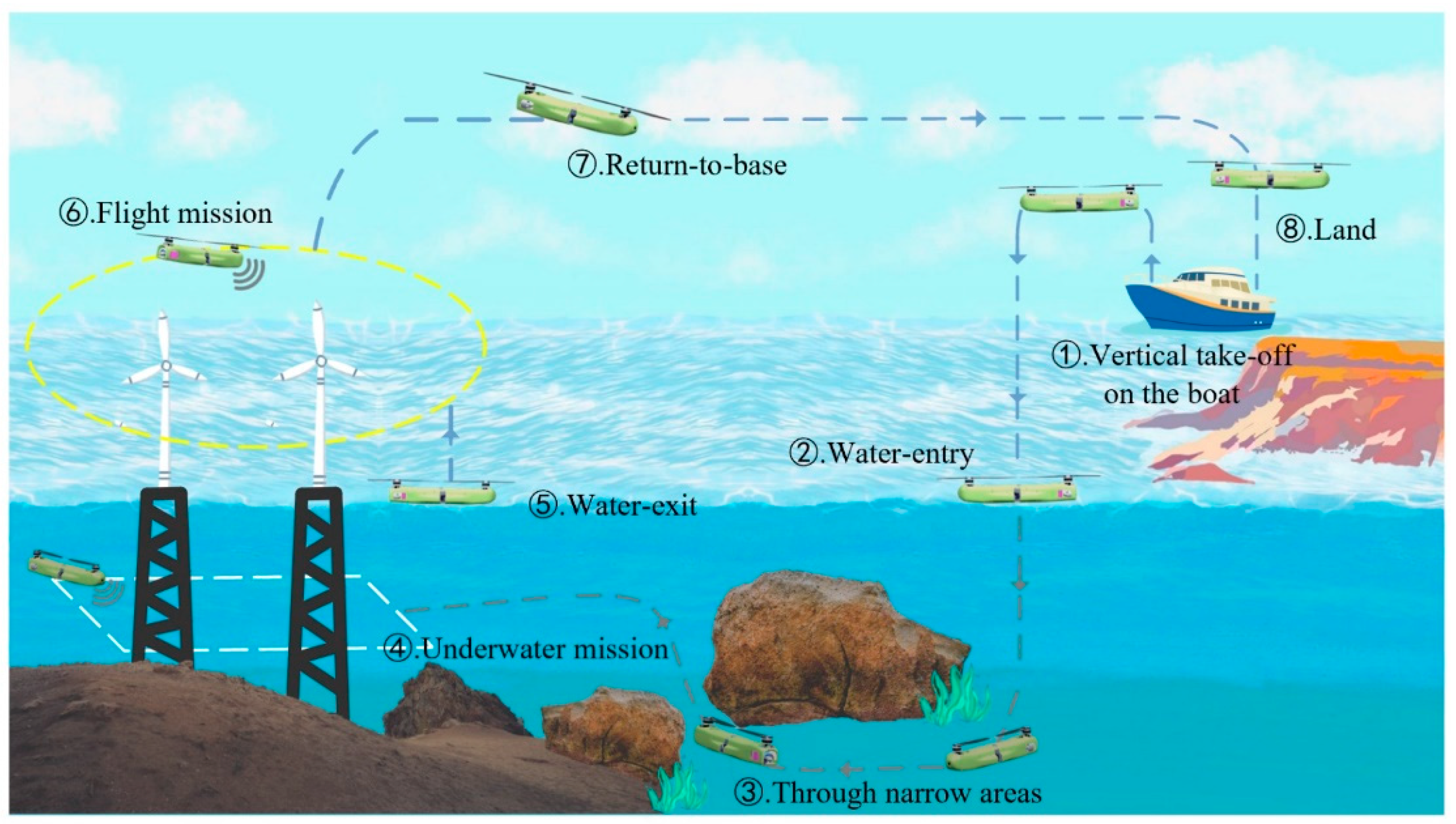

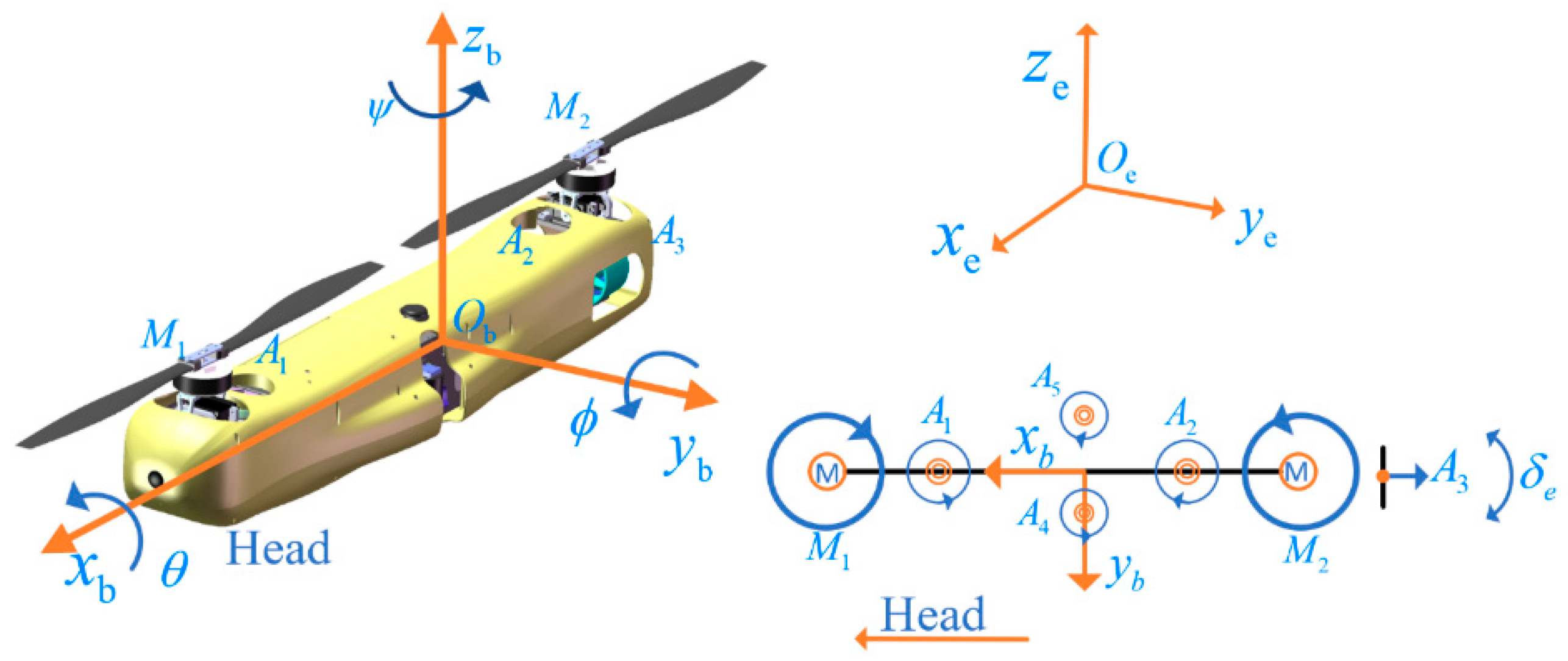


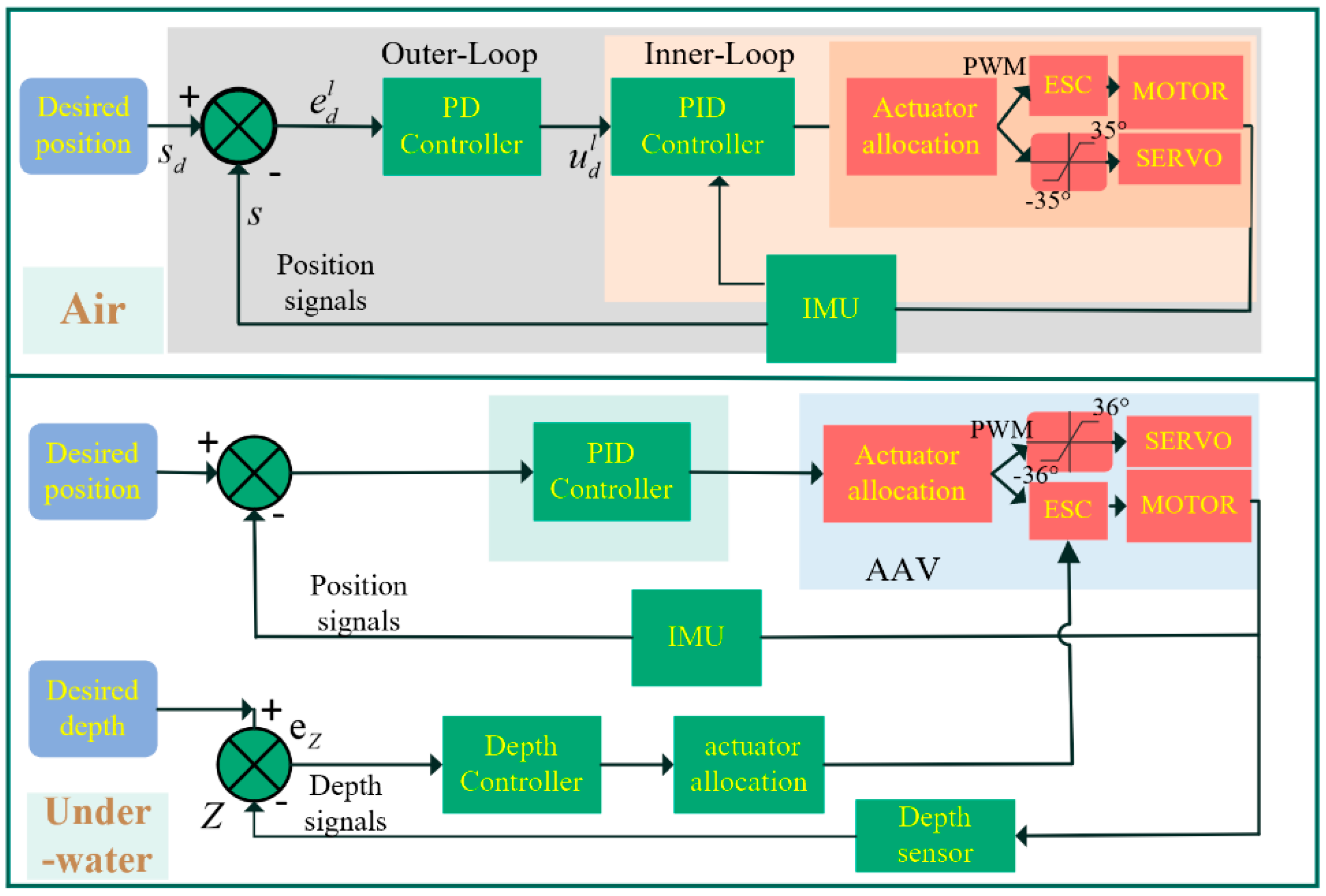




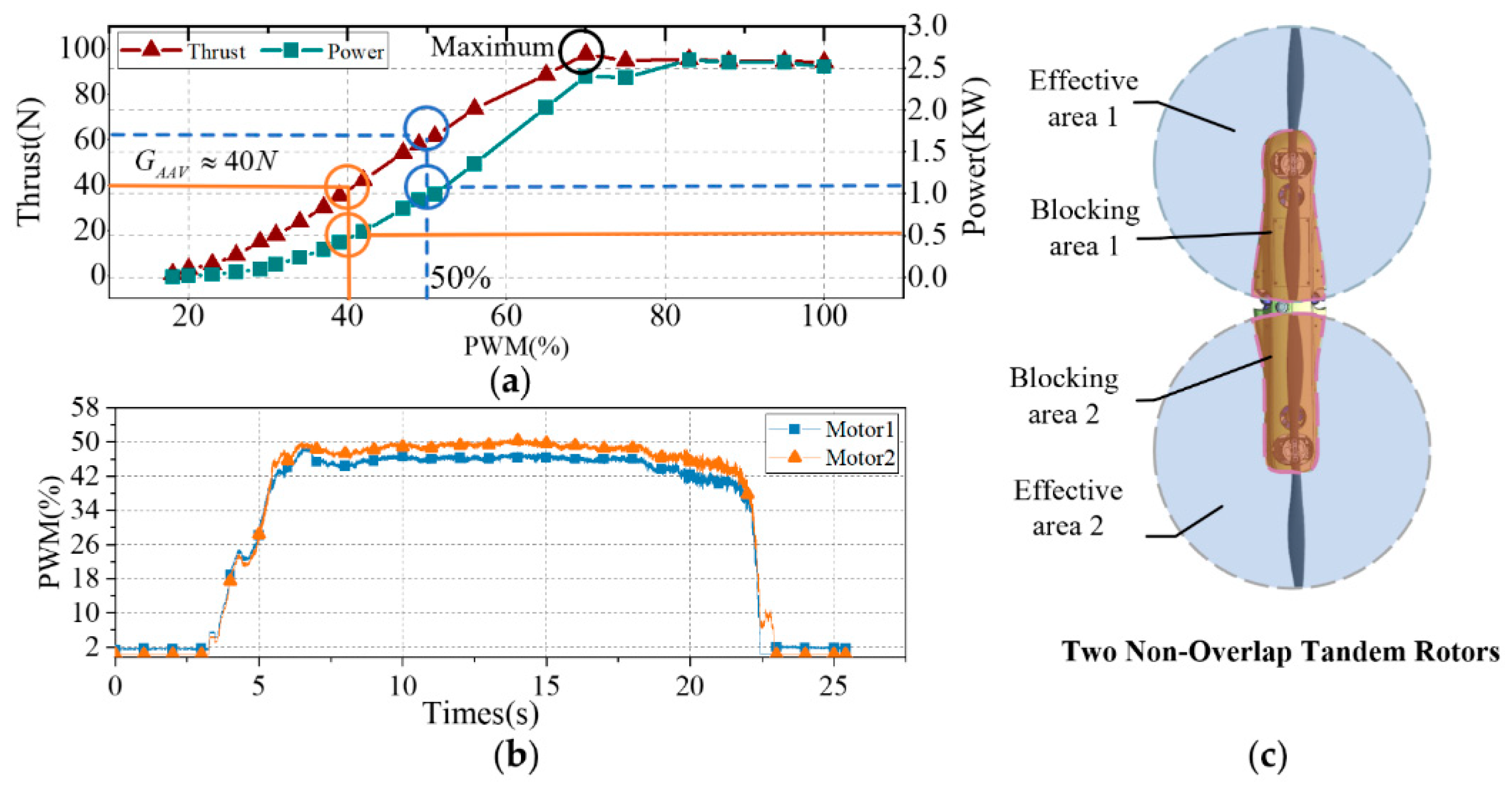
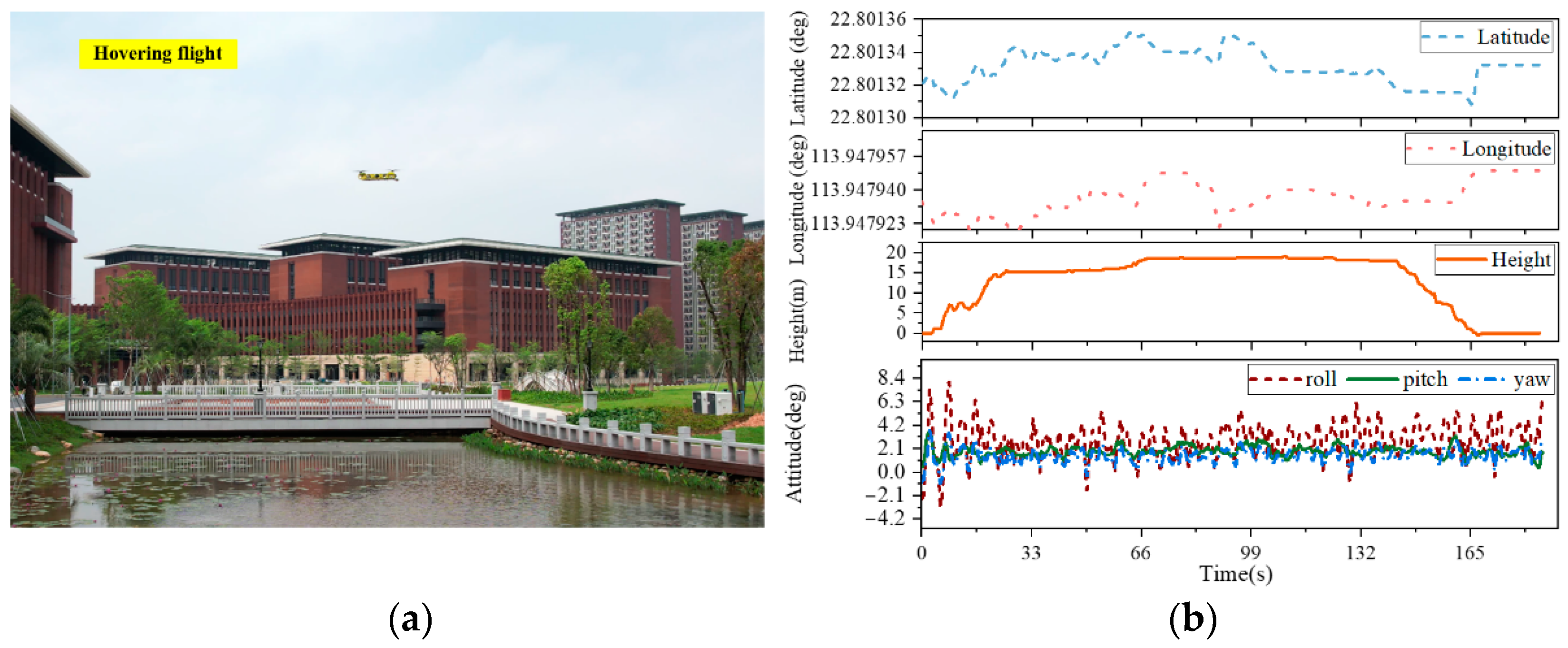
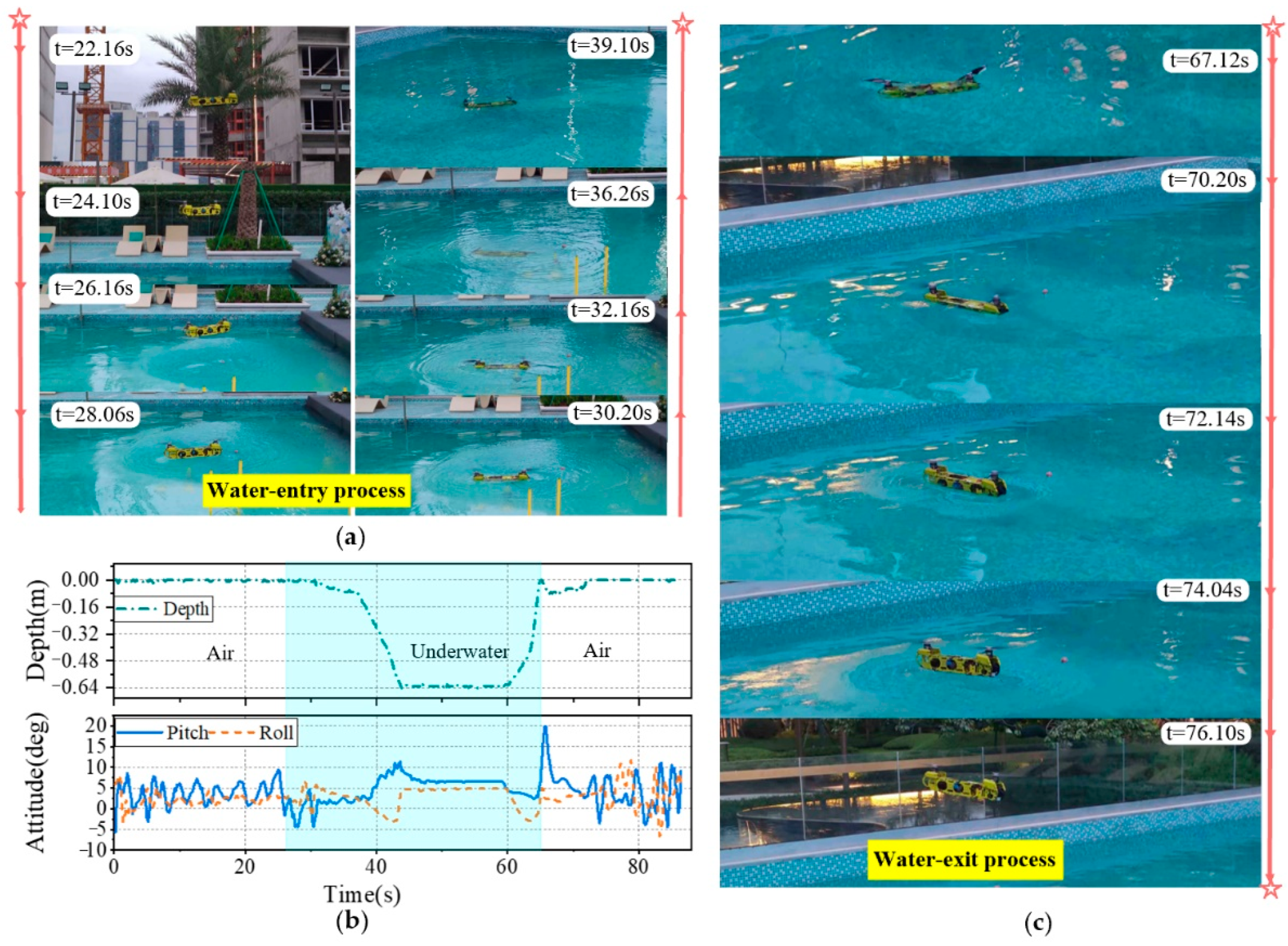

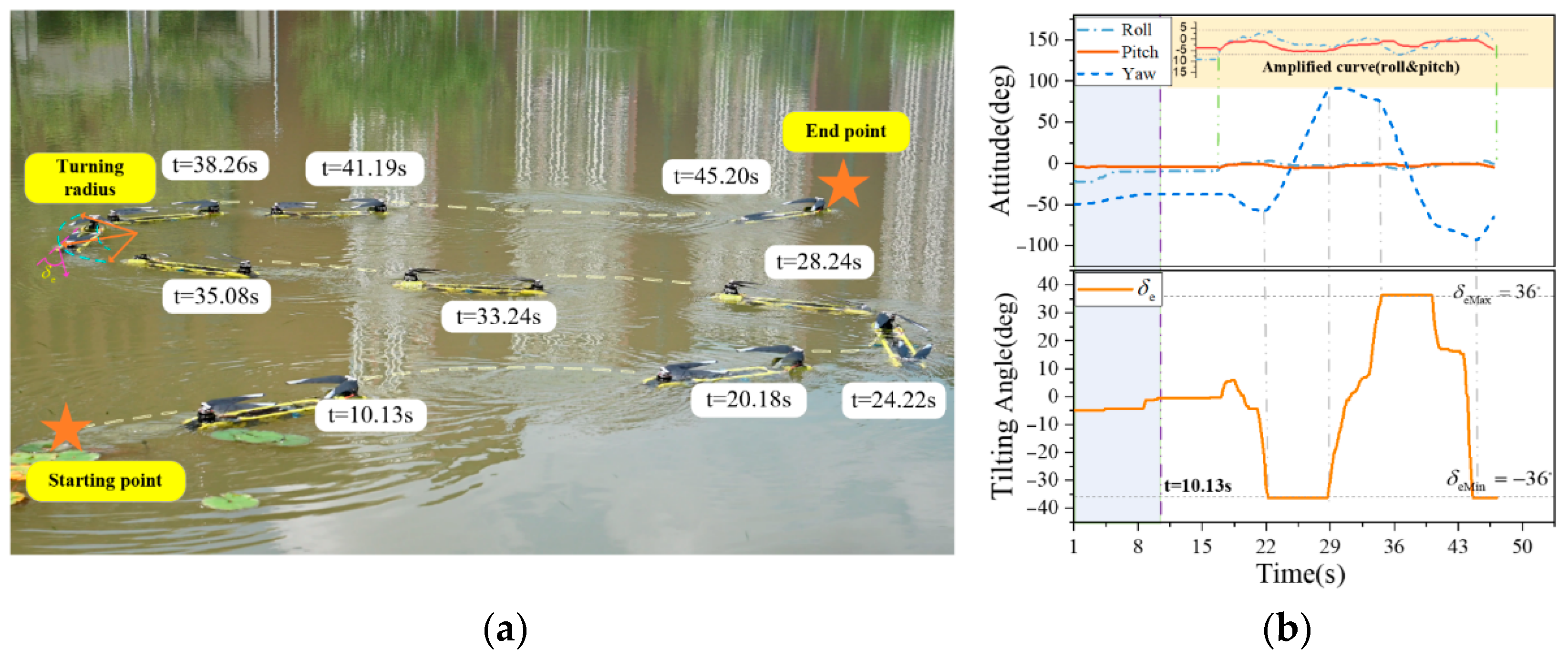

Disclaimer/Publisher’s Note: The statements, opinions and data contained in all publications are solely those of the individual author(s) and contributor(s) and not of MDPI and/or the editor(s). MDPI and/or the editor(s) disclaim responsibility for any injury to people or property resulting from any ideas, methods, instructions or products referred to in the content. |
© 2024 by the authors. Licensee MDPI, Basel, Switzerland. This article is an open access article distributed under the terms and conditions of the Creative Commons Attribution (CC BY) license (https://creativecommons.org/licenses/by/4.0/).
Share and Cite
Wu, S.; Shao, M.; Wu, S.; He, Z.; Wang, H.; Zhang, J.; You, Y. Design and Demonstration of a Tandem Dual-Rotor Aerial–Aquatic Vehicle. Drones 2024, 8, 100. https://doi.org/10.3390/drones8030100
Wu S, Shao M, Wu S, He Z, Wang H, Zhang J, You Y. Design and Demonstration of a Tandem Dual-Rotor Aerial–Aquatic Vehicle. Drones. 2024; 8(3):100. https://doi.org/10.3390/drones8030100
Chicago/Turabian StyleWu, Sihuan, Maosen Shao, Sifan Wu, Zhilin He, Hui Wang, Jinxiu Zhang, and Yue You. 2024. "Design and Demonstration of a Tandem Dual-Rotor Aerial–Aquatic Vehicle" Drones 8, no. 3: 100. https://doi.org/10.3390/drones8030100




